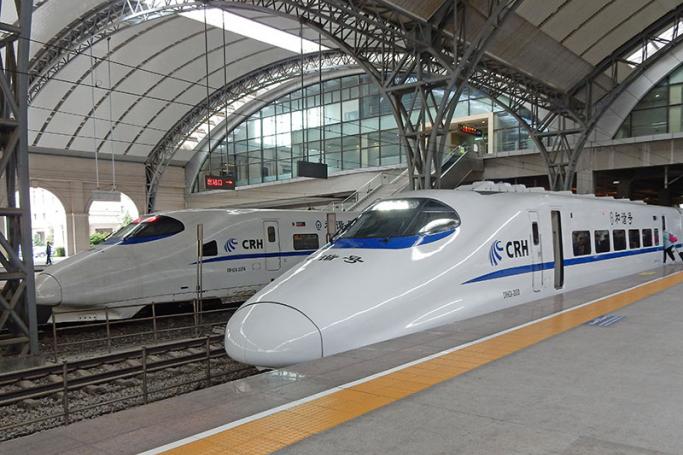In September of this year I wrote an article arguing that Myanmar will play a pivotal and key strategic role in China’s “One Belt One Road “strategy. Since the publication there have been a number of commentators claiming that recent activities suggest that Myanmar no longer holds this position. Let us first look at some of these activities and then assess whether the Country does still hold this role. Also note that the previous article focused on the maritime routes, particularly the impact on energy security for China as demonstrated in the map below. This article will look at the land routes and back up infrastructure to support the changes in maritime thinking.
Geo-Political Issues:
With the recent lifting of sanctions by the USA, there has been a warming of business relations and trade with the US. It has been suggested that this has cooled the Myanmar / China relationship creating the conditions for China to rethink its strategic investment in infrastructure. However this does not appear to be borne out by what is occurring on the ground. These actions would suggest that the soft diplomacy by China still sees Myanmar as being an important piece in the Asia supply chain puzzle. Examples include:
Increased diplomatic activity between the two countries ( the Lady visited China before the USA and Europe),
Key negotiations to resolve the Myitsone Dam project issue with important infrastructure concessions being contemplated that secure the Yunnan Province / Kyauk Phyu transport corridor,
China’s role as peace maker in the Northern States regional conflict zone.
I would also suggest that the West’s response to what is happening in Rakhine State is playing into the hands of China. Rather than pass political comment, China has stuck to its approach of not interfering in the affairs of another countries political issues. The difference in approach has been highlighted by an increase in western condemnation of the NLD government’s handling of the Rakhine State, with The Lady recently making a very public call on the West to help with resolving the problem rather than adding to it. In a sense China has inserted itself as part of the solution rather than part of the problem, winning the culture wars.
Supply Chain and Economic Considerations
Myanmar’s economy is expected to grow around the 8% mark in the coming year. According to reports out of the ADB and others, China will account for 40% of trade. Furthermore, in order to facilitate and secure this trade, China has granted highly concessionary terms to finance construction and infrastructure projects. These loans have been given on the basis of projects being allowed to be run by Chinese firms, much to the annoyance of the local population. There are suggestions that this approach has been part of the Myitsone project negotiations with a softening of stance by China in order to secure the Yunnan / Kyauk Phyu corridor.
Further developments has seen the signing of the BCIM (Bangladesh / China / India / Myanmar) economic co-operation agreement. The outcome of this agreement is to create a link between Kolkata - Dhaka – Mandalay – Kunming with a focus on building a transport, energy and telecom corridor. If you superimpose the earlier map with the one reproduced below, you soon realise the central hub status played by Mandalay. There are however some practical issues that need to be resolved, including rail gauge and the creation of special economic zones to facilitate transshipment. Furthermore we can see the various transport corridors connecting the West to the East, highlighting the potential risk to Singapore’s hub status as China looks to secure trade and energy routes without the need to use the Malacca Straits.
Myanmar, together with what is happening elsewhere in Europe and places such as Baku, is about to totally change the logistics balance that has dominated the East-West trade for the past 40 Years. It will allow manufacturers in once isolated, low cost producer areas, to consider costs associated with using rail or vessels. An ADB study has shown that rail is considerably cheaper than ship. However the study does have drawbacks in that the modelling was based Double Stack Trains and does not take account of rail gauge issues as well as cross border bureaucracy – issues mentioned earlier, and to some extent, resolved by the BCIM cooperation agreement.
Additionally, rail carriers travel at up to triple the speed of a vessel, and the potential financial savings from this new transport mix will translate into savings along the supply chain. One need consider the amount of time/money tied up in L/Cs and Value of Goods whist in transit on lengthy Sea Voyage Journeys. Shippers may well respond by pushing and or developing super ports / break bulk hubs to improve transit times and reduce the cost per mile per shipped container, but these concerns have been taken into the strategy with key ports and canals under consideration. All these elements will help reduce the LC exposure period as well as improve shipping times.
Conclusion
With the shipping and rail complementing each other as evidenced by the transport maps above, Myanmar still has an important role in the One Belt One Road strategy. If the country takes lessons learned from Dubai, we will vessels diverting from the main trade routes on the basis of huge container loads that can be offloaded onto rail. Dubai has built its logistics strength on this model and Myanmar’s location lends itself to carve a niche within the China One Belt One Road roll out. What it needs to ensure is that they have deep water ports with large break bulk areas developed within SEZ’s to make this niche a reality..












